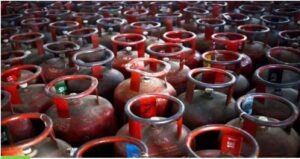LPG subsidy is here to stay notwithstanding proclamations by successive governments to end it. This is because actions on the ground are driven by populism, not economics

Subsidy on LPG is the excess of its cost of supply over the price paid by the beneficiary. (Representative image)
In the Union Budget for 2023-24, finance minister Nirmala Sitharaman has kept the budget estimate (BE) for petroleum subsidy – primarily subsidy on liquefied petroleum gas (LPG) for household consumption – for 2023-24 at a mere Rs 2,257 crore. The subsidy on the purchase of a product is a financial assistance given by the state to persons who cannot afford to pay the market-based or cost-plus price. Subsidy on LPG is the excess of its cost of supply over the price paid by the beneficiary. The cost of supply is refinery-gate price, freight, marketing costs, marketing margin, dealers’ commission and taxes and duties.
At present, 96 million poor households who have been provided free gas connection under the Pradhan Mantri Ujjwala Yojana (PMUY) during the last eight years or so are eligible to receive subsidy at the rate of Rs 200 per cylinder (14.2 kg) for 12 fills. The three major oil marketing PSUs – Indian Oil Corporation (IOC), Bharat Petroleum Corporation (BPCL) and Hindustan Petroleum Corporation (HPCL) – deliver the LPG cylinder to eligible beneficiaries at full cost-based price and follow it up by depositing subsidy in their account and claim reimbursement from the government of India (GoI).
Small Outlay
With the subsidy at Rs 200 per cylinder, the annual outgo on 12 fills in a year per beneficiary comes to Rs 2,400. For 96 million PMUY beneficiaries, the subsidy requirement will be Rs 23,040 crore. It may well be, the fills taken by the beneficiary are less; for instance, beneficiaries took four fills on an average during 2021-22. Even on this basis, the subsidy requirement would be Rs 7,680 crore annually. Against this, the Budget for 2023-24 has provided only Rs 2,257 crore.
Does it give a signal that the government intends to completely exit subsidising LPG sooner than later?
In June 2020, the LPG subsidy was stopped. That was due to the fortuitous circumstance of a steep decline in international prices (due to the COVID-19 pandemic) leading to a fall in price to Rs 600 a cylinder even on a cost-plus basis; hence subsidy support wasn’t required. The expenditure of Rs 36,000 crore under this head during 2020-21 was used largely to clear past dues of oil PSUs and provide free gas connections under PMUY.
During 2021-22 when the international price rose due to waning COVID and demand revival, the retail price of LPG zoomed to over Rs 900 per cylinder. This led the government to restore subsidies, but only for PMUY beneficiaries. It spent Rs 14,000 crore during that year. During 2022-23, even as BE was kept at Rs 4,000 crore, it was increased to Rs 9,170 crore in the revised estimate (RE).
Hidden Subsidy
Additionally, from June 2020 to June 2022, the government had asked the three oil marketing PSUs to sell LPG at price below cost and gave them a one-time grant of Rs 22,000 crore to compensate for the losses incurred. This was nothing but subsidy (albeit ‘hidden’) given to all and sundry, and not just PMUY beneficiaries. Against this backdrop, the possibility of subsidy outgo during 2023-24 being substantially higher than BE cannot ruled out.
Currently, when the cost of a cylinder is more than Rs 1,100 (in Delhi), a beneficiary won’t be satisfied with a subsidy of Rs 200 as she will still have to pay Rs 900 from her pocket. This will build pressure for increasing the subsidy, especially in view of impending elections. If it is increased to say Rs 600 (to ensure a price of Rs 500 per cylinder, being targeted by opposition-ruled states such as Rajasthan), the outgo even at 4 fills would be Rs 23,040 crore. The ball doesn’t stop here.
The unfolding geo-political situation including the intensification of the Ukraine war, additional sanctions on Russia, increasing demand from China as it lifts COVID restrictions, etc will lead to the firming up of international prices of crude and LPG. Morgan Stanley has projected that the price of crude will rise to $110 per barrel in the second half of 2023. In turn, this would require a further increase in subsidy to ensure that the target price of Rs 500 per cylinder is maintained.
Consequently, we could be staring at an expense much higher than 2022-23 RE of Rs 9,170 crore in the next fiscal; the precise level would depend on international price, the subsidy per cylinder, the number of beneficiaries and refills per beneficiary. The government will also spend Rs 30,000 crore, as already announced, by way of ‘capital support’ to the three oil marketing PSUs during 2023-24 to compensate for the losses incurred by them due to selling fuel at lower prices.
To conclude, LPG subsidy is here to stay notwithstanding proclamations by successive governments to end it. This is because actions on the ground are driven by populism, not economics.
UTTAM GUPTA is a policy analyst. Views are personal and do not represent the stand of this publication.
https://www.moneycontrol.com/news/opinion/banish-those-thoughts-of-lpg-subsidy-ending-in-the-near-term-10186541.html